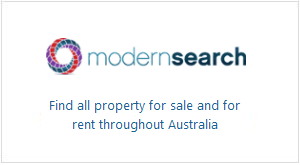 Sobox CEO Kelly Millar recently spoke to Sold Magazine about the way social media is changing real estate advertising, and where print fits into a social future. Here is their article in full:
Sobox CEO Kelly Millar recently spoke to Sold Magazine about the way social media is changing real estate advertising, and where print fits into a social future. Here is their article in full:
The ‘glossies’ lose their shine
The stratospheric rise of online behemoths like Facebook and Twitter is changing the way that smart agents market and list their properties. Social Media is rewriting the rules in the real estate industry and the future of print-based advertising is looking less glossy. Kelly Millar shares her opinion.
“The report also estimates that 57.5% of all internet users – or 127 million people – will use a social network at least once a month in 2010.”
The great writer Mark Twain once stated “The report of my death is an exaggeration”. This famous (and often misquoted) line has become a sort of rallying cry for any industry, brand or product that is facing obsolescence.
The publishing industry is the latest group defying a premature obituary. With the emergence of low-cost/high-ROI internet advertising and marketing tools, the world of print-based advertising is facing an uphill battle, with many publications either facing significant drops in ad revenue, or closing up shop altogether.
So is print media really dead? Of course not. If it were dead, you wouldn’t be reading this article in a printed magazine! The fact remains that newspapers and magazines with informative and respected content are continuing to survive. And the ones that adapt – and successfully marry their online and offline components (via websites, mobile applications and even iPads) – will likely flourish well into the future.
That concept of the online/offline “marriage” is equally critical to your real estate business. While print has long been valued for its branding quality and its ability to reach the masses, the truth is that it’s no longer the ubiquitous medium that it once was.
Agents who rely primarily on costly brochures and print ads may soon begin to feel the pinch from customers. As more sellers realise that the ROI for print is far less than today’s online offerings, they will become less likely to subsidise the glossies, and instead look towards social media platforms like Facebook, Twitter, Blogs and even YouTube.
A solid social media component has become a critical element of any marketing and advertising strategy, and is often used to complement other activities like print, TV, radio and online activities.
Yesterday’s stodgy newsletter has been replaced by today’s interactive Blogs. Announcements by the old letterbox drop are now broadcast via Twitter. And word-of-mouth campaigns are now shared globally via Facebook. In truth, brands and businesses worldwide are embracing social media as a fresh and effective channel to communicate with customers, elicit feedback and improve the product.
Now, before you assume that social media is the domain of tweens, teens and anyone who hasn’t heard of The Beatles, consider the following: According to a recent report by eMarketer, this year an astounding 60% of Internet users aged 35 to 44 – and one-half of those in the 45-to-54 age group – will use social networks at least once a month. The report also estimates that 57.5% of all internet users – or 127 million people – will use a social network at least once a month in 2010. It goes on to predict that nearly two-thirds of all Internet users will be regular users of social networks in 2014.
Those numbers represent a significant shift from the current stereotype of a social network user as being primarily from the Generation Y segment. It seems that as more of the Gen X and Gen Y users begin using social networks, then their parents (i.e. Baby Boomers) will begin to log on as well – to view photos of their grandkids, share status updates and just “keep in touch” with members of their family.
As these people become accustomed (nay, “addicted”) to social media, they will be far more likely to seek out and/or trust the people, brands and businesses that are already in their social media “community”. Thus, when it comes time for them to, say, buy or sell a house, they may eschew the glossy liftout in favour of a more modern approach. Maybe they will first browse for agents among their Linkedin connections, or perhaps do a search in Facebook for “Real Estate”, or even check Twitter for tweets or tags like “Aussie Property”. The possibilities are endless.
Regardless of what the future holds, one message rings true: to thrive in today’s (and tomorrow’s) property world, smart agents will need to look beyond the glossy, and embrace the evolving world of social media.
Kelly Millar is the CEO of SOBOX. She recently joined the business following five years experience in online real estate marketing. Kelly was Consumer Marketing Manager Aust/NZ for realestate.com.au and also held international marketing roles in the REA Group. Previously she had a long and successful career in advertising communications.
Sobox was created by Classified Ad Ventures, the publisher of propertyadguru.com.
Related posts:
- Print Media: Dead or Just Dying?
- Over 65s Flock to Social Media in the US
- Portal Runs Social Media Seminars
- Social Media a Key Component of Fortune 500
- New Social Tool for Aussie Agents
- Surveys Shows the Problems with Print
- Social Media Gains Strength
- Print Advertising is Obsolete – The Case for On-Line
- NAR Appoints Social Media Manager
- SMMI Launches Social Media Course





